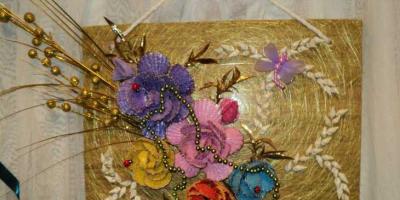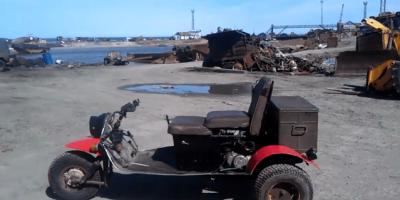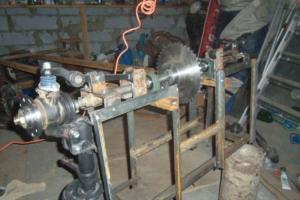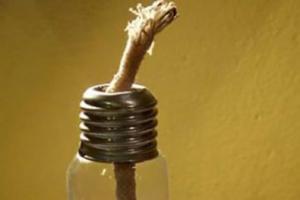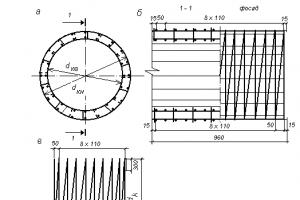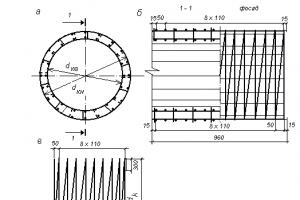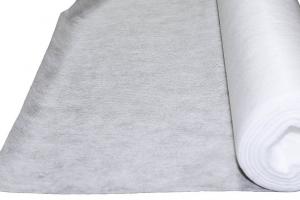There are many opinions about Damascus steel. Someone claims that her recipe is lost. And when you say that it’s Damascus steel, they look at you with a smile and leave. Others haven’t heard much about it at all, and ask ridiculous questions: “What is this drawn with?” or “Why isn’t the blade polished?”
Of course, in fairness, it should be noted that from year to year there are fewer and fewer ignorant people (especially in the city of Moscow). Once a person uses a knife made of high-quality Damascus once, he will never purchase a knife made of any other steel.
In terms of cutting properties, high-quality Damascus steel is several times superior to other grades of steel (be it 65X13, 440C, 95X18). Its only drawback is that it rusts. Therefore, she needs constant care. I worked with a knife - wiped it dry, greased it with neutral oil or grease and put it away. If rusty spots suddenly appear on the steel, they need to be removed with very fine sandpaper and oil, or better yet, kerosene. In principle, caring for such a knife is no more than caring for a gun with non-chrome-plated bores. All the troubles are compensated by excellent cutting properties (which cannot be compared with any stainless steel: both domestic and imported). Let’s look at the secret of the cutting properties of Damascus steel. Firstly, in manufacturing technology. Damascus is made as follows. It is obtained as a result of a long technological process, performed only by hand. The basis is taken from several types of steel (both hard and soft), which are assembled in a certain sequence to form a package (We do not name steel grades, because the secret of good Damascus steel lies precisely in the correct selection and proportions of various metals). A prerequisite is that more hard steels are used than soft ones. The steel package is placed in the forge and heated to forging temperature. After this, special additives are applied to prevent the formation of oxides that prevent plates of different types from welding together. Next, the package is punched several times with a hammer and sent to the forge to be warmed up for welding. As soon as the package is warmed up, it settles under the hammer, then it is sent back to the forge and warmed up for subsequent pulling. When the plate is welded and shaped to size, it is heated again and chopped into the required number of plates, which are cleaned of oxide and assembled into a package. The whole process is repeated all over again. The number of repetitions of the process is proportional to the quality of the product, respectively the order. After the welding process, and there can be from three to ten, the plate is unforged to the required blade size. Then the steel is normalized and the workpiece goes into further work. Steel obtained in this way is characterized by increased strength, excellent cutting properties and beauty. Damascus Russian Bulat LLC has 400 layers of metal or more. As a result of the process, a unique pattern appears, as unique as a fingerprint.
Sometimes at exhibitions you hear that a purchased Damascus steel knife quickly became dull. The answer is simple. Either a person bought “Damascus” (i.e., stainless steel 65X13, 95X18 etched in a special way), or he purchased Damascus welded from soft metals. It is much easier and faster to weld such metal. Visually distinguishing it from high-quality Damascus is almost impossible. Soft damascus was previously used to make guns, because... For these purposes, viscosity was required and the cutting properties of the metal were not needed. A knife made of soft Damascus (no matter how beautiful its design may be!) cuts worse than any knife made of stainless steel. When trying to harden such a knife, no matter how hard you try, it is often no harder than 48 units. H.R.C. A knife from the Russian Bulat company has a hardness of at least 60 units. HRC (usually 62-64 HRC units). Some believe that a knife at 64 units. HRC is made brittle.
This is fairly applicable to homogeneous steels (U10, 95X18), but does not apply in any way to correctly forged Damascus. This, of course, does not mean that a knife with a hardness of 64 units. HRC can be bent into a ring! But with limited contact with bones (when cutting an animal), as well as with small chopping blows, this combination of hardness and elasticity is quite sufficient. A good knife steel should not only be hard, but also elastic. Let’s answer the question: “How does a knife become dull?” This happens in two ways. If you look at the cutting edge of a dull knife under a microscope, you can consider two situations:
The cutting edge is bent. (This indicates that the steel is too soft);
The cutting edge has broken off. (This indicates that the steel is too hard.)
While hunting I had to observe the work of a knife made of 95X18 steel. The owner assured that he bought the knife for decent money from one of the famous craftsmen (During the sale, the knife was praised: hardness 70 HRC units, steel taken from a spaceship debris, laser sharpening, etc.). But when the hunt has come to an end, the elk is captured, the owner of the “wonderful knife” approaches the huntsman and offers to work with the knife. After about five minutes, the huntsman politely returns the knife and advises us to buy something better (they say, such a knife is only suitable for cutting lard and sausage!). The owner is offended and tries to butcher the animal himself.
He is surprised to notice that the knife slides and does not cut... And the reason is the following. The knife was truly hardened to extreme hardness. Steel 95X18 is not particularly flexible anyway, but when hardened to more than 60 units. HRC generally loses all elasticity. In this case, when starting work, the cutting edge simply broke off. Moreover, this is not noticeable visually. When I try to sharpen the knife again, everything repeats. Often the cutting edge breaks off during the sharpening process, so a paradox arises: you sharpen the blade, the blade wears off, but the knife is still dull!
The situation is different with mild steel. For example, 40X13. When such a knife becomes dull, the cutting edge bends. It is possible to cut with such a knife if you keep a stone with you for editing - you work a little, shuffle on the stone, work again, shuffle again. This is undoubtedly better than the first case!
The optimal grade of stainless steel is 65X13. Although it is far from quality Damascus. This grade of steel is often called medical steel. For people raised in the Soviet Union, the terms “medical”, “military”, “space” have a magical effect. 65X13 is a good steel for knives. But the term “medical” is difficult to apply to it. Firstly, scalpels from steel 65X13 began to be manufactured only in the late 80s, and before that carbon steels U8, U10 coated with chromium were used.
Secondly, the tasks of a surgeon, who makes very minor incisions during the operation, and a hunter, butchering an elk or a bear, are completely different. In addition, a medical scalpel is not reused during operations (scalpels with disposable removable blades soon appeared). Therefore, the term “medical” steel does not obligate anyone to anything. Although we have been using this steel for inexpensive models for a long time.
Let's return to Damascus steel knives. These knives, manufactured by the Russian Bulat company, were tested by hunters in various parts of the country. 99% give a positive assessment of the knife’s performance. 1% are people who use a knife for other purposes. (For example, there was a gentleman who tried to cut a tractor valve with a knife, another, heavily drunk, threw a knife at a tree, etc.). According to reviews from various hunters, two moose in a row were skinned and butchered with a knife without additional sharpening; five small boars; large cleaver; several beavers. Maslennikov V.S. I personally tried to remove the skin of two moose with a knife from one sharpening point (the knife continued to cut after that!). If you look under magnification at the cutting edge of a Damascus knife after cutting an elk, you will see a micro-saw. It happened due to the fact that the soft steels were slightly crumpled, while the hard ones remained sharp due to the additional viscosity acquired during the forging process. Therefore, when we look at the cutting edge of a knife after prolonged work, the blade shines in places and it seems that the knife has become dull, but when we start cutting, it turns out that the knife cuts no worse than a new one! Even when a Damascus knife becomes completely dull, it is enough to carefully sharpen it with a sharpening stone to restore its cutting properties. This is where the effect of straightening the soft parts of the cutting edge comes into play. After long work, in the winter hut or at a hunting base, the knife needs to be wiped, the cutting edge should be adjusted on a good stone, lubricated with oil and put in a case.
The question that interests many is “Which is better: damascus or damask steel?” What is damascus and what is damask steel? Steel prepared from plates through a forge welding process is commonly called “Damascus.” Steel, melted in a crucible and cooled in a special way, is usually called “damask steel.” There is also an intermediate technology where cast plates are mixed with other steels through forge welding. From a consumer point of view, good damask and good damask steel are one and the same. The same hardness, the same micro-saw effect, also easy to sharpen... Bad damascus and bad damask steel are identical: neither one nor the other will cut! To avoid buying a bad knife, you need to purchase a knife from a reputable company with a quality guarantee.
Now there are many different individual entrepreneurs and new companies that have recently been producing knives. Previously, the organizers of these companies were engaged in everything except metalworking; and have absolutely no understanding of metals. They don’t have the necessary production base, they don’t make blades, but buy them wherever it’s cheaper…. When buying a knife from such companies, it is difficult to hope that it will serve for a long time (although there are no rules without exceptions). Although the prices of many individual entrepreneurs for Damascus knives are quite low (from 900 rubles to 1500 rubles). When purchasing a knife, you should remember that if you follow the technological process, a Damascus steel knife will cost from 2000 rubles. up to 3500 rub. Tempted by cheaper knives, you risk remembering the proverb: “The miser pays twice!” Cast damask steel is somewhat more expensive to manufacture than damascus. Question: “Why does one Damascus knife from the same company cost 3,000 rubles, and another $300?” Expensive knives use end-damascus. What is this, “end Damascus blade”?
Take two, three or four plates of damascus with different patterns, layers and properties. They are welded together along the height of the blade and follow the contour of the cutting edge. What does this give?
This adds beauty to the product (due to beautifully selected three or four patterns);
Allows you to place very hard Damascus with a large amount of hard metal on the cutting edge; soft Damascus is used on the butt of the blade (the same one from which gun barrels were made). Thanks to the combination of these damasks, the strength of the knife increases. The cutting properties of such a blade (albeit not much) increase.
The main effect of end damask is beauty and unique handiwork. The best specialist in end-damascus in Russia is Mr. Arkhangelsky and his daughter Maria. Their prices, of course, are much higher. One more question has to be answered: “How many layers does your damask contain?” We determined for ourselves the optimal price-quality ratio - 400 layers. Even a specialist cannot visually determine the number of layers. As a rule, blacksmiths know how many layers they have forged. A record is kept for each batch of Damascus…. You hear from buyers at the exhibition: “Your Damascus has 400 layers, but your neighbors have 600 layers!” It’s important to remember: it depends on what you layer. You can forge Damascus with 600 layers of nails and it will be worse than Damascus, which has 200 layers of good metal. And one more thing. When forging above 400 layers, it is necessary to change the production process (it is necessary to additionally saturate the metal with carbon, since carbon burns out during the heating process), which significantly increases the cost of the workpiece (and, accordingly, the knife). If a knife with 1000 layers is forged in the same way as with 400 layers, then no matter what metal you take, it will look like metal from tin cans. But if you take this seriously, following the technology, then a knife made of 1000-1500-layer Damascus will be better than a 400-layer one, but its cost should be at least $200.
People often ask: “Which damask is better: with a longitudinal pattern or with a transverse twist?” From a consumer point of view it doesn't matter. Just like mosaic damasks. Only some types of end damascus may differ in working qualities. Often, mosaic damasks are inferior in cutting properties to regular ones. Because Often, in pursuit of a design, little attention is paid to the cutting properties of the metal.
A question often asked at exhibitions: “Does your knife cut nails?” Of course, it’s not very clear why people would chop nails with a knife?! Maybe they are connected with this occupation due to the nature of their work or have mental disabilities... But we will still try to answer this question. Let's say right away that cutting nails is not such a big problem! Knife made of any steel with a hardness of 50 units. HRC will cut a nail on the working part. You just need to change it slightly structurally: the thickness of the blade in the cutting part should be at least 1 mm (thicker is better), and the sharpening angle is at least 45 degrees (thicker is better). Order such a knife and you will be able to chop all the nails you want! Remember that the hardness of a nail is much lower than the hardness of a knife (even from mediocre steel); it’s all about the design of the blade. For Damascus steel, when cutting nails, the thickness of the working part can be made less than 1 mm (up to 0.6 mm), the angle can also be smaller. There are knives that cut paper, then cut the nail (by hitting the butt with a hammer) and then the knife can cut the paper again (though a little worse). In general, if you want to check the quality of the blade on a nail, it is not necessary to cut it. It is enough to plan the nail or make small notches on it. Any knife made of good Damascus steel can easily withstand this operation. We do not take into account knives with a very thin working part from 0.1 m and thinner (for example, fillet knives and an “Uzbek” knife). And yet, we do not recommend doing such experiments with knives, because... We believe that this is not why an adult buys a knife.
Of course, if in an extreme situation you have to use a knife to cut nails, cable or thick wire, that’s a different question. There is no need to do this unless necessary. There are other tools for this (for example: chisels, metal cutters), which are much cheaper than a good knife. With such constant experiments, especially if the objects being cut turn out to be red-hot, your knife will still break. Our company produces knives for hunters, fishermen, tourists, and for lovers of long hikes. The knife can open cans without any problems, it can easily cut the carcass of a large animal (moose, bear) without sharpening; when planing wood, it holds an edge for several days in a row. They can process several tens of kilograms of fish. It is for these purposes that the Russian Bulat company produces knives. If the knife is used for its intended purpose, the company provides a 10-year guarantee on the blade! Since our company is already 13 years old, and during this time there have been practically no complaints about blades from our Damascus. If a person buys a knife for cutting nails, throwing at wood and all kinds of experiments, then it is better to turn to some other company. True, as practice shows, if a person plans to break a knife, he will still break it, no matter where and no matter what steel the knife is made of! But this is already a sign of insanity.
We wish all readers of this article good shopping and successful hunting!
The material was prepared by V.S. Maslennikov, General Director of Russian Bulat LLC.
Buying a knife made of high-quality steel is, of course, not a problem. If there is not enough assortment of regular or branded blades, you can find a specialist who works on an individual order.
However, you can go another way - make a knife yourself. You most likely won’t be able to forge the perfect blade the first time, but who knows...
A homemade knife made from cable is a worthwhile undertaking; the result can be a high-quality blade with a visible pattern on the blade, formed by mixing layers of metal during the forging process.
Material selection
In our time, only true connoisseurs of this craft engage in blade making. However, even a novice blacksmith and anyone can try to forge a homemade knife.
The easiest way to do this is from a piece of thick reinforcement, an old file or a piece of a car spring. It will be a little more difficult to unforge the drill or bearing race. You can get an interesting result from a spun chain from a chainsaw or car engine.
Another material that, after forging, can become a high-quality blade is cable. Its cores are made of carbon steel, capable of holding an edge well after hardening. If you manage to preserve the braided pattern after forging, you can get a very original blade, vaguely reminiscent of wild Damascus steel.

What do you need to know to figure out how to make a knife from rope? Two important nuances: the first is whether the properties of the high-carbon material will be preserved during processing; the second is whether a visible pattern will appear on the blade, gracefully turning into a sharpened edge.
Damascus steel
Previously, sharp, flexible and reliable blades with a patterned pattern on the blade were called damask blades (according to one version, from the province of Fulad in Persia, where they were made). Such characteristics and visible effects were achieved using various methods.
Steel could be smelted in a crucible by metallurgical casting, experimenting with the composition of the material. Another option is to “weld” steel strips of different hardnesses in a forge and then forge the resulting workpiece. Blades forged by blacksmiths using a special technique began to be called Damascus.

They differ precisely in the manufacturing method and technology, and not in the characteristics and degree of expression of the pattern. Having unforged a knife from a cable, you can try to create a blade with your own hands that vaguely resembles such material. And although the pattern on the blade is not an end in itself, it is still a distinctive feature of Damascus steel.
Blacksmithing tools and materials
To forge a knife from a cable with your own hands, you need to master the craft of a blacksmith at least at a minimum level. To do this, you will need a pair of hammers: one massive (up to 2 kg), the other lighter (up to 0.5 kg) for fine work, pliers, an anvil and a homemade furnace (forge crucible) with forced air supply.
The manufacturing process cannot be done without an angle grinder or electric welding. You will need a vice and the fuel for the crucible can be charcoal from rocks that produce great heat, because the workpiece will have to be heated to a temperature of over 1200 ° C.
For better “welding”, you can use borax as a flux. It removes scale and prevents carbon from burning out of the material. It is also necessary to prepare the oil for hardening and ensure safety precautions.

Being able to use someone's blacksmith shop or business forge with a mechanical hammer will make the task much easier.
Preparatory operations
To make a knife from a cable, first of all you need to sketch it out on paper. Then you will have to find a suitable material. It is necessary to check it and at least remotely determine the carbon composition in it.
It depends on this whether the future blade will be hardened, whether it will hold an edge, and whether it will be possible to carry out forge “welding.” The test is carried out for sparks from a moderately dense orange sheaf will mean that welding is possible, the steel contains about 1% carbon, which is enough for hardening.
Next you need to cut a piece of cable to the required length. At this stage, the method of manufacturing the handle is determined. It can be made from a single piece of cable without forging. The knife will look original, but have decent weight.
Another option is to electric weld a reinforcement rod to a section of cable. It is convenient to hold on to such a handle when heating the workpiece in the crucible and processing it with hammers. You can then make a handle on it or, by riveting it, install decorative overlays.

Before starting work, the cable is tightened with steel wire clamps in several places. This is done so that during the heating process the thin wires do not unravel.
The workpiece is placed in the lit crucible and allowed to heat up to 800 °C. At this stage, the cable strands are released (annealing), the material becomes pliable. Additionally, oil and dirt burns out.
After cooling, the workpiece is clamped in a vice and one of the ends of the cable is welded using electric welding. Using an adjustable wrench, it is “tightened” as we weave to maximum density. The other edge is scalded while simultaneously fastening a piece of reinforcement for ease of work.

The wire clamps are removed, the workpiece is heated to 1200 °C, and generously sprinkled with borax. This is necessary for better penetration. After reheating, forge “welding” is performed. Using a heavy hammer, the cable is broken flat and periodically sprinkled with borax.
The workpiece is constantly heating up. The more often this is done, the more intensively the forging occurs, the better the material is “welded.” After rough processing, they move on to forging the blade, the future cutting edge, and the shank. At this stage, a smaller hammer is used more, giving the workpiece an outline reminiscent of a sketch of the future blade.
Complexities of technology
It is necessary to constantly monitor the temperature of the workpiece, not allowing it to cool. Working with a heavy hammer, especially without proper practice and experience, can easily damage the curls of the cable in places where a distinct weave pattern should remain. Unwanted hits with the edge or corner of a sledgehammer on a heated workpiece leave deep dents that cannot always be ground off.

During operation, the process of carbon burning out of the metal is inevitable. There are craftsmen who forge a knife from a cable on dense wood placed on the plane of an anvil. When it comes into contact with heated metal, it smolders, and the oxygen in the air at the point of contact is burned, which reduces the degree of carbon burnout from the material. In addition, by unforging the cable on a tree, you ensure that the workpiece cools more slowly, so you can do a larger amount of work in one cycle.
Special approach
Forging a knife from a cable is also possible using another technology. There are craftsmen who, before forge “welding,” pack an annealed and compacted cable blank of the required length into a piece of stainless steel pipe. Its diameter is selected in such a way that the cable fits into it very tightly, with some effort.

Both ends of such a case are welded by electric welding, fusing the ends of the cable with the pipe. The workpiece is heated to a temperature of 1200-1300 °C and in this form is unforged. The alloyed stainless steel of the pipe with the cable is not welded, but serves only as a protective cover against uneven forging. In addition, the hot cable does not come into contact with air oxygen and the carbon in it burns out minimally during forging.
If you use a hydraulic press, you can significantly facilitate forge welding. After heating to 1300 °C, the case with the cable inside is placed under load and left until it cools. If you use dies, you can immediately form thickenings under the neck for the transition from the blade to the handle and the butt of the shank. During the next heating, the shape of the blade is finalized by hammering through the case.
After cooling, the pipe is cut off with sandpaper from the end where the tip will be. The case is carefully opened using a chisel. Further processing of the workpiece occurs on an emery wheel. The excess areas are pre-cut and the blade beveled without final sharpening.

Heat treatment
Blade hardening is just as important as the choice of steel. According to technology, a knife made from a cable after forging has tension, it must be removed. To do this, the workpiece is heated to 800 °C and allowed to cool.
Hardening is carried out by heating the blade to 1200 °C. It is lowered point down into heated oil and held motionless. The blade must then be released. It is cleaned of carbon deposits, heated to 200 °C and dipped into oil again.

Some craftsmen harden knives through oil (lower for two seconds) and then place them in salted water.
Etching and finishing work
After heat treatment, the cable knife is polished, and the final finishing of the blade blade and the shank for attaching the handle are made. To develop the design, the workpiece is dipped into a solution (5%) and left for etching. Treatment time depends on the desired effect and can be up to one hour.
If before this you stick a stencil on the blade with the manufacturer’s logo (initials or any design) cut out on it, as a result it will be imprinted on the steel and will indicate the authorship of the blade. After this, fine grinding is done with fine-grained sandpaper and the blade is polished.
Before this operation or after, the selected type of handle is installed. These can be overlays made of valuable wood with an interesting texture, stacked washers of various materials in any sequence, or, for example, a piece of deer antler.

It may not be possible to make such an original and skillfully made rope knife (photo above) the first time, but if you want to master the craft of blade making, you should strive for this result.
Famous Damascus steel. What qualities did these amazing blades have? What is the secret of ancient technology? Damascus for its time was a revolutionary breakthrough in the creation of high-strength metal and new technology. The legendary swords that cut the silk scarf had extraordinary sharpness. Isn't this a myth? The twenty-first century forge is the realm of traditional technology. The principle of creation has not changed for centuries. The main elements of this production: open fire, hammer, anvil, blacksmith skill. A sign of new times in the blacksmith profession is the raw materials. In the old days, artisans mined ore themselves, then processed it into metal. Modern blacksmiths, as a rule, operate steel with alloying additives. These impurities give the metal its individual characteristics.
The superiority of Damascus steel over all other alloys is a common myth. Scientists believe that this is a figment of the imagination of writers of the early nineteenth century. In historical novels of that time, Damascus blades had miraculous properties. They cut through like butter. Historians and metal scientists refute these legends. Ancient Damascus would hardly be able to withstand modern steel. However, it was somewhat simpler in chemical composition and the steels that were used in it were not so interesting. The “Damascus” that today’s craftsmen create is, as a rule, the use of initially high-strength steels with good characteristics.
Nevertheless, the “Damascus” of its time was indeed distinguished by its high strength and flexibility. This combination made Damascus steel an excellent weapon. The secret is in a special alloy.
In its pure form, iron is a very soft metal and is not suitable. Therefore, people use alloys - compounds of iron with other chemical elements. An essential component of these compounds is carbon. It gives the alloy hardness. For example, usually in a nail, carbon contains hundredths of a percent (0.06-0.16%) of the total metal. And in railway rails it is from 0.5 to 0.7%. Iron alloys containing less than 2.14% carbon are called steel. After special heat treatment, it acquires another important quality - elasticity.
The main secret of the Damascus production technology is a multi-layer blank, which consists of alloys with different carbon contents. Damascus steel is one of the first composite, that is, composite, materials in history. “Damascus” is a welding technology that involves diffusion bringing together layers of two, three or more steels by pressure. The main part of the package, which consists of carbon-rich steels, gives Damascus special hardness. The source of elasticity of the future product is alloying additives and iron. Thus, alternating layers of metal with very high and very low carbon content gave the new material: hardness, elasticity and impact strength (resistance to impact loads).
Traces of this cocktail can be seen with the naked eye. The characteristic pattern on the Damascus blade is an optical effect of uneven distribution of carbon. “Damascus” has its own unique “face”, its own design, its own beauty in iron. Homogeneous material, even in color, is not so interesting. As a rule, it is painted, or to create some kind of image.
The high qualities of a particular Damascus steel blade are established at the initial stage. There is no perfect recipe for creating a “package”. The selection of source materials, their proportions, the principle of combination, in ancient times, any of the elements of this process, was the secret of the master, the foundation of the superiority of his weapons.
Made of Damascus steel - a source of pride for any hunter. Thanks to manufacturing technology, such a tool cuts the hardest natural materials and fabrics. It holds an edge well. However, the product of these masters is rarely used for its intended purpose. The main function of their steel works is decorative.

